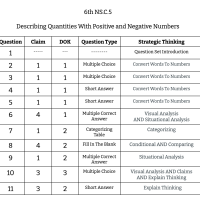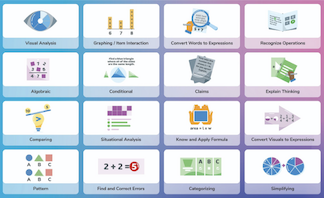
6th Grade Math - NS.C.5 - Describing Quantities With Positive and Negative Numbers
11 Questions
Describing Quantities With Positive and Negative Numbers Introduction
Which integer represents the situation below?
Which integer represents the situation below?
Type in the integer that represents the situation below.
Type in the two integers that represent the situation below.
Identify the two integers that represent the temperature on the thermometer.
Read each situation. Decide if the integer in each situation should be represented by a positive or negative number.
Find an integer that meets all of the following criteria. Type in your answer.
The students in Mrs. Okabunata's class were asked to write a situation that represents - 6. Below are some of the statements they wrote.
Do you support Lydia's claim? Explain.
The current temperature is 12 degrees outside. If the temperature drops 15 degrees, will the new temperature be represented by a positive or negative integer? Explain.

We help districts in California boost CAASPP Math Scores by Δ +20% by helping teachers determine if students are struggling with the content, the technology involved with the type of question, or the type of strategic thinking required. Based on the 8 Standards for Mathematical Practice, our platform and professional development empowers teachers to recognize all 16 types of strategic thinking across any math question, curriculum, or assessment.
Learn more